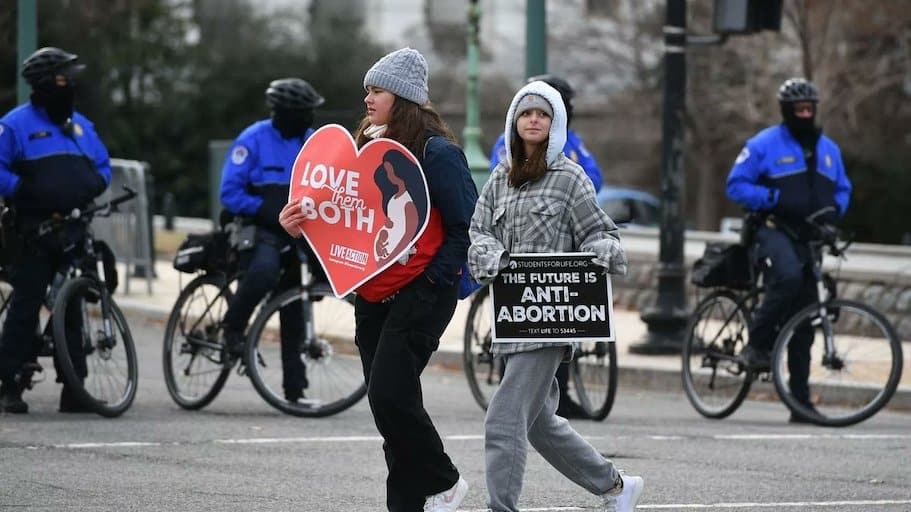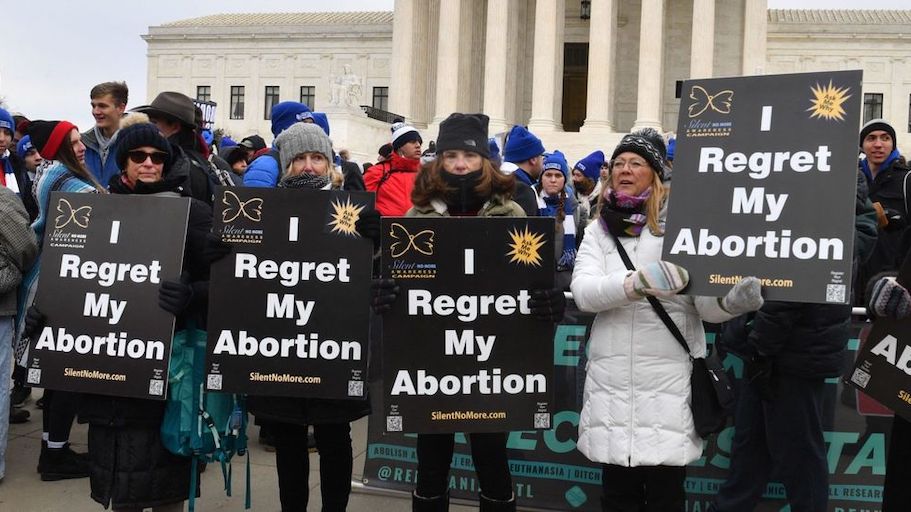

On June 24, 2022, the Supreme Court of the United States overturned Roe v. Wade, restoring the right to protect unborn children and their mothers to the people.
In 2018, Mississippi passed a law limiting abortions after 15 weeks of pregnancy, except to save the life and preserve the physical health of the mother, or in cases of severe fetal abnormality. The law was passed by overwhelming majorities in the state legislature and signed by then-Governor Phil Bryant. In May 2021, the Supreme Court announced that it would review Mississippi’s law limiting abortion after 15 weeks of pregnancy, specifically considering the question, “Are all pre-viability bans on abortion unconstitutional?” The case, Dobbs v. Jackson Women’s Health Organization, was heard on December 1, 2021.
Under Roe v. Wade and Planned Parenthood v. Casey, “pre-viability” abortion laws have been blocked for decades by federal courts. The Dobbs decision will allow more extensive protections for the unborn to go into effect without interference by federal courts.
Abortion Law in the U.S.
It is widely recognized that the government has legitimate interests in regulating abortion. And yet, because of the Roe decision in 1973, the Supreme Court imposed legal abortion on-demand nationwide for almost 50 years. The grip of the decision blocked commonsense pro-life laws from going into effect.
Supreme Court decisions such as Roe v. Wade imposed abortion on the American public, but never resulted in settled abortion law. In fact, the American people are speaking through their state legislatures with over 540 pro-life bills introduced in 2021 alone, of which 69 were signed into law.
Elected state and federal officials, representing their constituents, should have the ability to protect unborn children from brutal abortions. Laws like Mississippi’s, work to bring the U.S. closer to the international mainstream. According to a comprehensive analysis by the Charlotte Lozier Institute, 47 out of 50 European nations limit elective abortion prior to 15 weeks.
Abortion Jurisprudence Primer
Learn about the history of abortion law as well as current law in the U.S.
Does Banning Abortions After 15 Weeks Make Sense?
See the science showing late-term abortions are not only more risky, but also unnecessary
ACOG Should Reconsider Fetal Pain
The American College of Obstetricians and Gynecologists (ACOG) needs to look at the evidence
What the Justices got Right (and Wrong) During Oral Arguments
On Wednesday, December 1, 2021, the Supreme Court held oral arguments in Dobbs v. Jackson Women’s Health Organization. Click here to view a transcript of the arguments. Click here to listen to an audio recording of the arguments.
Chief Justice Roberts Is Correct: U.S. Abortion Law Is Outside Global and European Mainstream
Justice Elena Kagan is Wrong: Science and Medicine Have Made Tremendous Advancements Since 1973
The Science of Fetal Development
As science advances, it proves again and again that the unborn child is a human life:
- As early as 5 weeks:
- Unborn babies in the womb have a heartbeat
- Blood vessels are forming into the circulatory system
- The brain and spinal cord are beginning to develop
- By 10 weeks:
- Babies have arms and legs, fingers and toes
- The baby can kick and will jump if startled
- Their pain receptors have been developing for weeks (week 7)
- At 15 weeks, babies:
- Have fully developed hearts – pumping 26 quarts of blood per day
- Fully formed noses and lips, and eyelids and eyebrows
- Can taste and make facial expressions, yawn, hiccup, swallow, and suck their thumbs
- They can feel pain:
- By 13 to 14 weeks, almost the entire body responds to light touch
- Brain structures are mature enough by 15 weeks to process pain
- Painful procedures trigger a hormonal stress response
Nearly 50 years ago in 1973, when Roe v Wade was decided, babies were considered viable at 28 weeks. Since then, medical advancements have increasingly pushed the age of viability earlier and earlier. With today’s medical care, premature babies are increasingly able to survive at 22 weeks or even earlier with aggressive care. That means babies are able to survive at least a month and a half earlier than they were when Roe was decided.
The Voyage of Life
Be amazed. Modern medicine and science tell us more about the development of each human being from fertilization to birth than ever before. Join us on a journey where science enlightens us at every step, from the first time a human heart beats, toes wiggle, ears hear music, and unborn eyes see light – all before being born into the world. It’s a journey you’ll never forget!
Polling
The American people recognize that the court-imposed viability standard is inhumane. They side with the accelerating scientific advancements that confirm the humanity of the unborn, and reject abortion radicalism.
Reject abortion after the first three months of pregnancy
More likely to support a 15-week limit after learning that an unborn child can feel pain
More Likely to Support Republican Candidate Who Would Limit Abortion at 15 Weeks
The Preparedness of the Pro-life Movement to Meet the Needs of Moms & Babies
Now more than ever, the Pro-Life Movement is prepared to come alongside pregnant mothers and their children and families to provide much needed resources that help them embrace life.
A recent study found that more than 2,700 pro-life pregnancy centers nationwide served almost two million people in 2019, at an estimated value of nearly $270 million.
- They provide a variety of vital services typically at no cost including: pregnancy tests, ultrasounds, STI/STD tests, parenting and prenatal education programs, material and financial assistance, and even after-abortion support.
- Post-visit surveys indicate centers have extraordinarily high rates of client satisfaction. All Americans benefit from these resources in communities.














